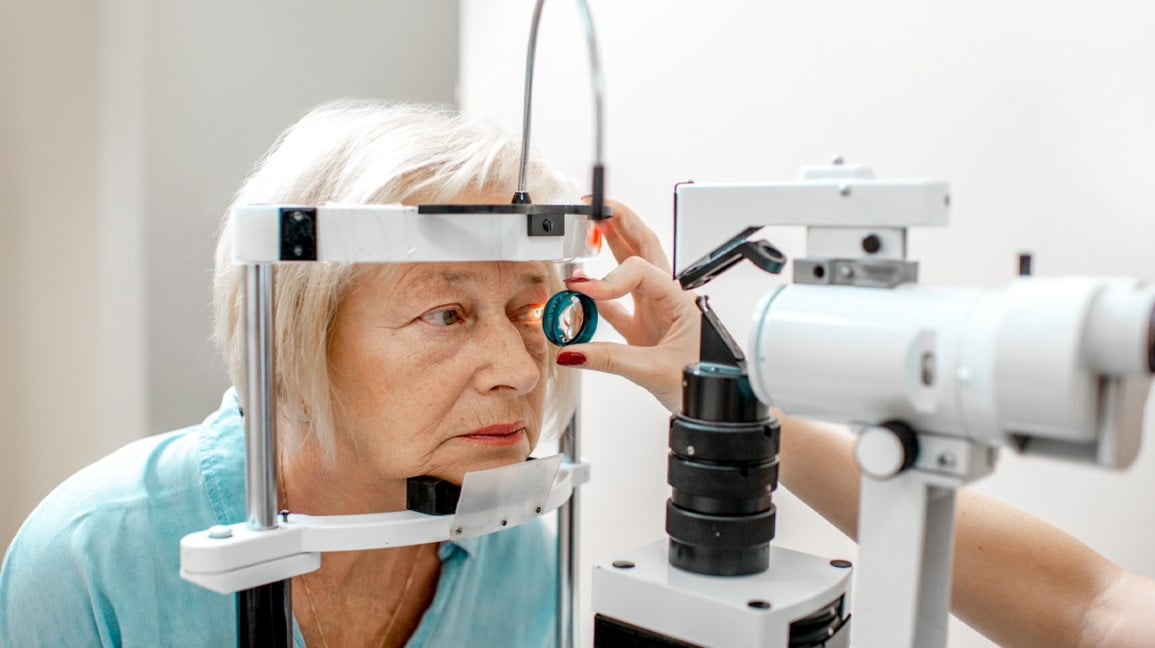Glaucoma is a disease that damages the delicate nerve fibres in your eye’s optic nerve. While there are many reasons that lead to this condition, careful titration of pressure inside the eye (intra-ocular pressure) remains the most effective way to prevent damage to the optic nerve and avoid loss of patient’s field of vision.
What Causes Glaucoma?
Your eye constantly makes fluid (aqueous humour). As new aqueous flows into your eye, the same amount should drain out through the drainage channels. This process keeps pressure in the eye (called intra-ocular pressure or IOP) stable. But if the drainage channels are not working properly, fluid builds up. Pressure inside the eye rises, damaging the optic nerve.
The optic nerve is made of more than a million tiny nerve fibres. It is like an electric cable made up of many small wires. As these nerve fibres die, you will develop blind spots in your vision. You may not notice these blind spots until a large number of your optic nerve fibres have been lost. At which point, you may suffer irreversible loss of field of vision or tunnel vision.
Who is at risk for Glaucoma?
Some people have a higher than normal risk of getting glaucoma. This includes people who:
- are over age 40
- have family members with glaucoma
- are of African, Hispanic, or Asian heritage
- have high eye pressure
- are significantly farsighted or nearsighted
- have had an eye injury
- use long-term steroid medications
- have corneas that are thin in the center
- have thinning of the optic nerve
- have diabetes, migraines, high blood pressure, poor blood circulation or other health problems affecting the whole body
Talk with an ophthalmologist about your risk for getting glaucoma. People with more than one of these risk factors have an even higher risk of glaucoma.
What are the common symptoms of Glaucoma?
There are usually no warning signs or obvious symptoms in the early stages. Generally, the moderately elevated eye pressure in glaucoma is not something that patients can feel. As the disease progresses, nerve fibres that conduct information for outer field of vision are lost, leaving a small tunnel of sight. For that reason, glaucoma is commonly referred to as a silent thief of sight.
In a certain type of glaucoma called angle-closure glaucoma, patient can develop a sudden attack of symptoms when the drainage channels get completely blocked. The eye pressure rises very quickly causing a sever headache, nausea, vomiting, eye pain and blurry vision. This is a true eye emergency, and you should seek emergent medical attention at your nearest emergency room. Angle-closure is painful and can cause blindness if not treated promptly.
How can Glaucoma be detected?
Glaucoma has no symptoms in its early stages. In fact, half the people with glaucoma do not know they have it! Having regular eye exams can help your ophthalmologist find this disease before you lose vision. The frequency of eye exams will be determined by your ophthalmologist based on your risk factors. The only sure way to diagnose glaucoma is with a complete eye exam. A glaucoma screening that only checks eye pressure is not enough to find glaucoma.
During a glaucoma exam, your ophthalmologist will:
- measure your eye pressure
- inspect your eye’s drainage channels
- examine your optic nerve for damage
- test your peripheral (side) vision
- take a picture or computer measurement of your optic nerve
- measure the thickness of your cornea
How is Glaucoma treated?
Glaucoma damage is permanent—it cannot be reversed. However, careful monitoring and early therapy can help to stop further damage. To treat glaucoma, your ophthalmologist may use one or more of the following treatments.
- IOP-lowering eye drops
- Laser surgery to improve aqueous drainage (Trabeculoplasty)
- Laser surgery to reverse angle closure (Iridotomy)
- Minimally Invasive Glaucoma Surgery (MIGS)
- Cataract Surgery with/without the construction of a new drainage channel or insertion of a stent
Your Role in Glaucoma Treatment
Treating glaucoma successfully is a team effort between you and your doctor. Your ophthalmologist will prescribe your glaucoma treatment. Good adherence to the treatment plan can make a huge difference and truly impact the course of this disease.
Once you are taking medications for glaucoma, your ophthalmologist will want to see you regularly. You can expect to visit your ophthalmologist about every 3–6 months. However, this can vary depending on your treatment needs.
If you have any questions about your eyes or your treatment, talk to your ophthalmologist.

